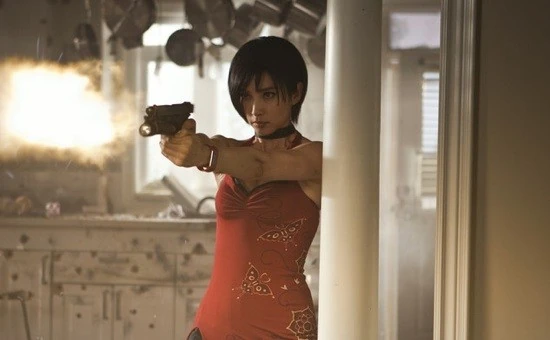United States
The United States is responsible for roughly 80% of the media we consume, therefore is very influential. When it comes to Hollywood films, on-screen gender representation is poor with males getting significantly more screen time than their female counterparts. For example,
Stereotypes
Another reason gender representation in media is limited is because it primarily focuses on the preservation of gender stereotypes therefore characters are not as varied or as unique as they have the potential to be.
This is amplified in the post-apocalyptic genre where a theme of survival is often apparent. For example, males are often portrayed as aggressive, rational or take-charge types who are the 'heroes' or saviours especially in action movies whereas females are often portrayed as emotional, weak and submissive.
When women do appear in action/survival movies it is to primarily to support male characters, to merely to assume the role of "eye candy" for male gaze/characters or to be saved by them. This is clearly rooted in outdated gender roles that are still subtly enforced through the media in this day. Therefore not many self-reliant or competent female characters are portrayed in post-apocalyptic movies.
Jurassic World
Mad Max: Fury Road
The Road
Charlize Theron playing Imperator Furiosa
The Avengers main cast - 5 males, 1 female. Statistically there are 2.24 male characters for every 1 female character, and only 31% of speaking roles are given to females.
On the other hand, male characters are rarely ever portrayed as emotional or submissive or in any unstereotypical roles. Non-binary genders are even more under-represented.
In contrast, there are a few movies that challenge gender stereotypes.
 The small writing on the bottom says the following: "Females are missing in action in adventure/action movies; only 23% of speaking roles in this genre are females."
The small writing on the bottom says the following: "Females are missing in action in adventure/action movies; only 23% of speaking roles in this genre are females."Those particular statistics can be applied to the genre I'm focusing on, post-apocalyptic action, as the two genres are very similar in terms of themes and representation. (I was unable to find a specific number for the sub-genre.)
Resident Evil is a movie series based off of a video game series that swiftly dodges particular gender stereotypes and has wider gender representation; the lead character is female which is highly unusual for a post-apocalyptic/action movie.
Milla Jovovich in Resident Evil: Afterlife
In addition to this, the female characters throughout the movie are portrayed as dominant and confident, as well as physically competent, which is also not stereotypical because primary protagonists, generally and in post-apocalyptic action movies, are rarely women. The film has a more broad variety of female characters and avoids the stereotype in action movies where women automatically compete/are pit against any other female characters - assuming there's more than one.
Michelle Rodriguez in Resident Evil
Ali Larter in Resident Evil: Afterlife
Bingbing Li in Resident Evil: Retribution
Nevertheless, the lead female character is often sexualised along with supporting female characters in the way they are dressed. This ascribes to stereotypes and panders to the 'male gaze.'
The term 'male gaze' refers to how the media, being male-dominated, is structured around the male audience's point of view, even when it comes to the way females are represented. Women are displayed in accordance to male viewers' preferences; this happens when the camera puts the audience into the perspective of a heterosexual male, noticeable examples being the over-sexualisation of females or lingering shots of a woman's body. This concept was first coined by feminist film critic Laura Mulvey in her 1975 essay titled "Visual Pleasure and Narrative Cinema."
Behind-the-Scenes
Gender representation is not particularly high in behind-the-scenes media either. For example, only 7% of all Hollywood directors are female.
Geena Davis, a successful female film director, had this in response to the study shown above:
"The fact is – women are seriously under-represented across nearly all sectors of society around the globe, not just on-screen, but for the most part we’re simply not aware of the extent. And media images exert a powerful influence in creating and perpetuating our unconscious biases. However, media images can also have a very positive impact on our perceptions. In the time it takes to make a movie, we can change what the future looks like. How do we encourage a lot more girls to pursue science, technology and engineering careers? By casting droves of women in STEM, politics, law and other professions today in movies."












No comments:
Post a Comment